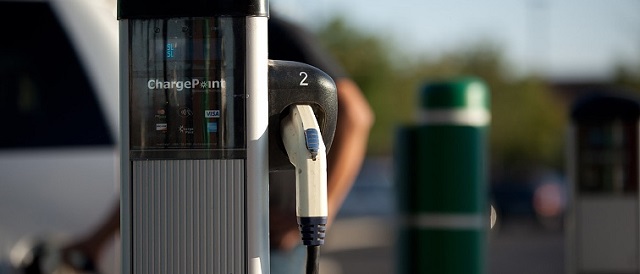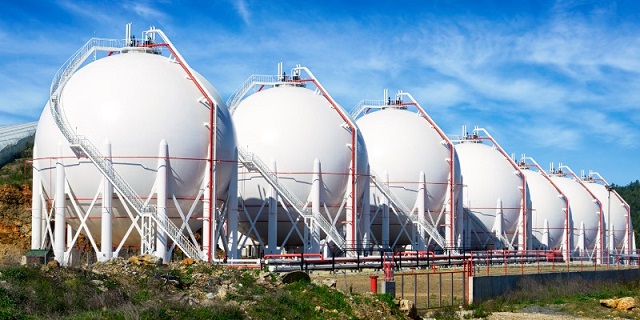Energy
British Columbia electric grid ‘at risk of shortfall’ as province limits natural gas, report warns

From LifeSiteNews
” B.C. could experience power shortfalls beginning in 2026 as the New Democratic Party (NDP) government continues to phase out natural gas. “
A report has found that the Canadian province of British Columbia’s electric grid is becoming increasingly inadequate as the government goes forward with plans to phase out natural gas power generation by 2030.
According to a December report by the North American Electric Reliability Corporation, British Columbia’s electric grid is “at risk of shortfall” in extreme weather conditions, such as the conditions which shut down its power grid last October.
“That should be a wake up call and should shake us out of our complacency that we have enough electricity to meet all of our potential desires, whether it’s electrification of vehicles, industry or home heating,” said Barry Penner, former B.C. cabinet minister and current employee of Resource Works.
The report warned that B.C. could experience power shortfalls beginning in 2026 as the New Democratic Party (NDP) government continues to phase out natural gas for power production.
Also in December, FortisBC, the province’s natural gas company, proposed to expand the province’s natural gas infrastructure in the ever-expanding Okanagan by building a new pipeline between Chute Lake and Penticton.
The suggestion was rejected by B.C. Utilities Commission, however, which continues to dismiss the warnings that the government’s plan poses a threat to energy reliability. Instead, the BCUC has argued that the demand for natural gas may decrease as the CleanBC climate plan banning natural gas space and water heating in new homes by 2030 is further implemented.
B.C. is at the forefront of the push to outlaw natural resources. According to their climate plan, newly constructed homes will be primarily heated with options like electrical baseboard heat, while a heat pump will be installed to kick in at -20 degrees Celsius. Additionally, the provinces is pushing for all new vehicles sold in 2035 to be fully electric.
B.C.’s climate plans come as last week Canadians across Alberta witnessed first-hand the instability and insufficiency of an electric power grid and renewable energy sources.
As LifeSiteNews previously reported, amid a cold snap in Western Canada that saw temperatures in some regions drop to nearly minus 50 degrees Celsius (-58 degrees Fahrenheit) over the weekend, the power grid in Alberta neared collapse due to inadequate production from renewable sources such as solar and wind.
In response to the situation, the neighboring province of Saskatchewan, which was also facing the same cold snap, announced it would be providing Alberta with electricity to stabilize the grid.
Many, including Saskatchewan Premier Scott Moe, noted that the incident served as a stark reminder of the potential dangers of a looming federal mandate calling for an eventual end to oil and gas power production in favor of less reliable wind and solar power.
“SaskPower is providing 153 MW of electricity to AB this evening to assist them through this shortage. That power will be coming from natural gas and coal-fired plants, the ones the Trudeau government is telling us to shut down (which we won’t),” wrote Moe on X (formerly Twitter) at the time.
During the outage, Canadians were also asked to delay charging their electric vehicles, which Conservative Party of Canada (CPC) MP Leslyn Lewis argued shows how Trudeau’s green agenda, which looks to ban sales of new gas-powered cars starting in 2035, is “unrealistic.”
The Trudeau government’s current environmental goals – which are in lockstep with the United Nations’ “2030 Agenda for Sustainable Development” – include phasing out coal-fired power plants, reducing fertilizer usage, and curbing natural gas use over the coming decades.
The reduction and eventual elimination of so-called “fossil fuels” and a transition to unreliable “green” energy has also been pushed by the World Economic Forum – the globalist group behind the socialist “Great Reset” agenda in which Trudeau and some of his cabinet are involved.
Even the recent energy crisis has not stopped the Trudeau government from pushing their radical agenda, which is apparently unaware or unsympathetic to Canadians suffering from the cold and power outages.
Just last week, Deputy Prime Minister Chrystia Freeland told attendees at the World Economic Forum’s (WEF) 2024 meeting in Davos that it is up to the government to “make” sure the “decarbonization” of Canada’s energy sector “happens.”
However, some western provinces have declared they will not follow the regulations but instead focus on the wellbeing of Canadians.
Both Alberta and Saskatchewan have repeatedly promised to place the interests of their people above the Trudeau government’s “unconstitutional” demands, while consistently reminding the federal government that their infrastructures and economies depend upon oil, gas, and coal.
“We will never allow these regulations to be implemented here, full stop,” Alberta Premier Danielle Smith recently declared. “If they become the law of the land, they would crush Albertans’ finances, and they would also cause dramatic increases in electricity bills for families and businesses across Canada.”
Saskatchewan Premier Scott Moe has likewise promised to fight back against Trudeau’s new regulations, saying recently that “Trudeau’s net-zero electricity regulations are unaffordable, unrealistic and unconstitutional.”
“They will drive electricity rates through the roof and leave Saskatchewan with an unreliable power supply. Our government will not let the federal government do that to the Saskatchewan people,” he charged.
Energy
Tech giants’ self-made AI energy crisis

For years tech giants have been helping climate catastrophists shut down reliable fossil fuel electricity. Now the grid they’ve helped gut cannot possibly supply their growing AI needs.
|
|
For years tech giants have been helping climate catastrophists shut down reliable fossil fuel electricity, falsely claiming they can be replaced by solar/wind.
Now the grid they’ve helped gut can’t supply their growing AI needs.¹
- For the last decade, tech giants such as Apple, Microsoft, Meta, and Google have, through dedicated anti-fossil-fuel propaganda and political efforts, promoted the shutdown of reliable fossil fuel power plants in favor of unreliable solar and wind.
- Tech giants have propagandized against reliable fossil fuel power plants by falsely claiming to be “100% renewable” and implying everyone could do it. In fact, they have just paid utilities to credit them for others’ solar and wind use and blame others for their coal and gas use.²
- In addition to their “100% renewable” propaganda, tech giants directly endorsed people and policies who shut down reliable fossil fuel power plants.E.g., The RE100 coalition, including Google, Apple, Meta, and Microsoft, advocates for policies to “accelerate change towards zero carbon grids at scale by 2040.”³
- Companies’ propaganda that solar/wind could rapidly replace fossil fuels has proven false.
Statewide blackouts in California (2020) and Texas (2021) were caused by the failure of solar/wind—which can go near zero at any time—to make up for lack of reliable fossil fuel capacity.
- Thanks in significant part to tech giants’ advocacy, we have now shut down enough reliable power plants to be in a nationwide electricity crisis.
For example, most of North America is at elevated/high risk of electricity shortfalls between 2024-2028.⁴
- The anti-fossil-fuel, pro-unreliable solar and wind political climate that tech giants have fostered is getting much worse, as the Administration has pledged to further reduce reliable electricity supply via power plant shutdowns and add artificial demand through EV mandates.
Biden’s EV mandate: a dictatorial attack on the American driver and the US grid
·APR 22Biden’s de facto mandate of over 50% EVs by 2032 is a dictatorial attack on the American driver and the US grid that will 1. Force Americans to drive inferior cars. 2. Place massive new demand for reliable electricity on a grid that is declining in reliable electricity supply.
Read full story - While for years tech giants didn’t seem to have any concern about the electricity supply disaster their propaganda and policies were bringing about, they are now very interested because of the accelerating power requirements of computing, above all the hyper-competitive AI space.
- To function at its potential, AI requires massive amounts of power. E.g., state-of-the-art data centers can require as much electricity as a large nuclear reactor.⁵
- Electricity demand from US data centers already doubled between 2014 and 2023. Now with the fast growth of energy-hungry AI, demand from data centers could triple from 2.5% to 7.5% of our electricity use by 2030, according to Boston Consulting Group.⁶
- In large part due to AI, nationwide electricity demand is projected to skyrocket. Official 10-year projections for the US have summer and winter peak demand rising by over 79 gigawatt and over 90 gigawatt. 90 gigawatt is equivalent to adding the entire power generating capacity of California (!)⁷
- Given the woeful underpowered grid that AI giants have helped bring about, dramatically rising demand from AI will not only contribute to massive electricity shortages, but it will also destroy a lot of potential for AI to occur in the United States.
- Limited and expensive electricity will force data centers to operate with higher cost or lower capacity within the US—or take a performance hit in the form of increased latency (which can drastically reduce the value of the product) by moving offshore.
- Not only is offshoring data centers destructive from an economic standpoint, it also poses a substantial security risk. E.g., Building a data center in China—which we already depend on dangerously for critical minerals—gives the CCP physical power over more parts of our economy.
- Economically, data centers are a gold mine of opportunities.Globally, data centers employed 2M people full-time in 2019, many in high-skill/high-pay jobs—and this number is forecast to increase nearly 300K by 2025.
Our gutted grid will cost many Americans these opportunities.⁸
- In the face of woefully inadequate electricity supply for their AI goals, tech giant CEOs are finally speaking up about the lack of power.
E.g., Meta CEO Mark Zuckerberg said in an interview that energy will be the #1 bottleneck to AI progress.
- It is not enough for tech giants to warn us about the lack of reliable power. They need to take responsibility for their anti-fossil-fuel advocacy that helped caused it. And they need to support energy freedom policies that allow all fuels to compete to provide reliable power.
End preferences for unreliable electricity
·DECEMBER 14, 2022Today’s grids are being ruined by systemic preferences for unreliable electricity: 1) no price penalty for being unreliable 2) huge subsidies for unreliables 3) mandates for unreliables Congress should end these now. The Opportunity America, given its combination of abundant domestic energy resources, technological ingenuity, and free-market competition, has …
Read full story - An example of a tech giant influencer not taking any responsibility for causing the electricity crisis is BlackRock CEO Larry Fink, who pushed companies and governments to adopt “net-zero” policies using mostly solar/wind, but now admits they can’t power AI data centers!
- A better attitude toward electricity was expressed by OpenAI CEO Sam Altman: “There will always be people who wait and sit around and say ‘we shouldn’t do AI because we may burn a little more carbon’… the anti-progress streak” and this “is something that we can all fight against.”⁹
- America faces a choice. We can either continue our current trajectory, descend into a Third World grid, and become totally inhospitable for AI, or we can adopt energy freedom policies and become a world leader in both AI and electricity.
- Share this article with tech giant CEOs and tell them to publicly apologize for damaging our grid and to commit to energy freedom policies.Google: @sundarpichai ([email protected])
Apple: @tim_cook ([email protected])
Meta: @finkd ([email protected])
Microsoft: @satyanadella ([email protected])
Michelle Hung contributed to this piece.
Popular links
- EnergyTalkingPoints.com: Hundreds of concise, powerful, well-referenced talking points on energy, environmental, and climate issues.
- My new book Fossil Future: Why Global Human Flourishing Requires More Oil, Coal, and Natural Gas—Not Less.
- Speaking and media inquiries
“Energy Talking Points by Alex Epstein” is my free Substack newsletter designed to give as many people as possible access to concise, powerful, well-referenced talking points on the latest energy, environmental, and climate issues from a pro-human, pro-energy perspective.
Energy
New Report Reveals Just How Energy Rich America Really Is

 From the Daily Caller News Foundation
From the Daily Caller News Foundation
A new report by the Institute for Energy Research (IER), a nonprofit dedicated to the study of the impact of government regulation on global energy resources, finds that U.S. inventories of oil and natural gas have experienced stunning growth since 2011.
The same report, the North American Energy Inventory 2024, finds the United States also leading the world in coal resources, with total proven resources that are more than 53% bigger than China’s.
Despite years of record production levels and almost a decade of curtailed investment in the finding and development of new reserves forced by government regulation and discrimination by ESG-focused investment houses, America’s technically recoverable resource in oil grew by 15% from 2011 to 2024. Now standing at 1.66 trillion barrels, the U.S. resource is 5.6 times the proved reserves held by Saudi Arabia.
The story for natural gas is even more amazing: IER finds the technically recoverable resource for gas expanded by 47% in just 13 years, to a total of 4.03 quadrillion cubic feet. At current US consumption rates, that’s enough gas to supply the country’s needs for 130 years.
“The 2024 North American Energy Inventory makes it clear that we have ample reserves of oil, natural gas, and coal that will sustain us for generations,” Tom Pyle, President at IER, said in a release. “Technological advancements in the production process, along with our unique system of private ownership, have propelled the U.S. to global leadership in oil and natural gas production, fostering economic benefits like lower energy prices, job growth, enhanced national security, and an improved environment.”
It is key to understand here that the “technically recoverable” resource measure used in financial reporting is designed solely to create a point-in-time estimate of the amount of oil and gas in place underground that can be produced with current technology. Because technology advances in the oil and gas business every day, just as it does in society at large, this measure almost always is a vast understatement of the amount of resource that will ultimately be produced.
The Permian Basin has provided a great example of this phenomenon. Just over the past decade, the deployment of steadily advancing drilling and hydraulic fracturing technologies has enabled producers in that vast resource play to more than double expected recoveries from each new well drilled. Similar advances have been experienced in the other major shale plays throughout North America. As a result, the U.S. industry has been able to consistently raise record overall production levels of both oil and gas despite an active rig count that has fallen by over 30% since January 2023.
In its report, IER notes this aspect of the industry by pointing out that, while the technically recoverable resource for U.S. natural gas sits at an impressive 4.03 quads, the total gas resource in place underground is currently estimated at an overwhelming 65 quads. If just half of that resource in place eventually becomes recoverable thanks to advancing technology over the coming decades, that would mean the United States will enjoy more than 1,000 years of gas supply at current consumption levels. That is not a typo.
Where coal is concerned, IER finds the US is home to a world-leading 470 billion short tons of the most energy-dense fossil fuel in place. That equates to 912 years of supply at current consumption rates.
No other country on Earth can come close to rivaling the U.S. for this level of wealth in energy mineral resources, and few countries’ governments would dream of squandering them in pursuit of a political agenda driven by climate fearmongering. “And yet, many politicians, government agents, and activists seek to constrain North America’s energy potential,” Pyle says, adding, “We must resist these efforts and commit ourselves to unlocking these resources so that American families can continue to enjoy the real and meaningful benefits our energy production offers.”
With President Joe Biden and former President Donald Trump staking out polar opposite positions on this crucial question, America’s energy future is truly on the ballot this November.
David Blackmon is an energy writer and consultant based in Texas. He spent 40 years in the oil and gas business, where he specialized in public policy and communications.
-

 Economy2 days ago
Economy2 days agoFeds spend $3 million to fly 182 politicians and bureaucrats to climate conference
-

 Addictions1 day ago
Addictions1 day agoLiberals shut down motion to disclose pharma payments for Trudeau’s ‘safe supply’ drug program
-

 espionage19 hours ago
espionage19 hours agoThe Scientists Who Came in From the Cold: Canada’s National Microbiology Laboratory Scandal, Part I
-

 Energy16 hours ago
Energy16 hours agoTech giants’ self-made AI energy crisis
-

 Energy2 days ago
Energy2 days agoNew Report Reveals Just How Energy Rich America Really Is
-

 Automotive2 days ago
Automotive2 days agoBiden’s Climate Agenda Is Running Headfirst Into A Wall Of His Own Making
-

 Great Reset2 days ago
Great Reset2 days agoBiden Administration Eager to Sign WHO Pandemic Treaty
-

 Economy2 days ago
Economy2 days agoCanadians experiencing second-longest and third steepest decline in living standards in last 40 years





















